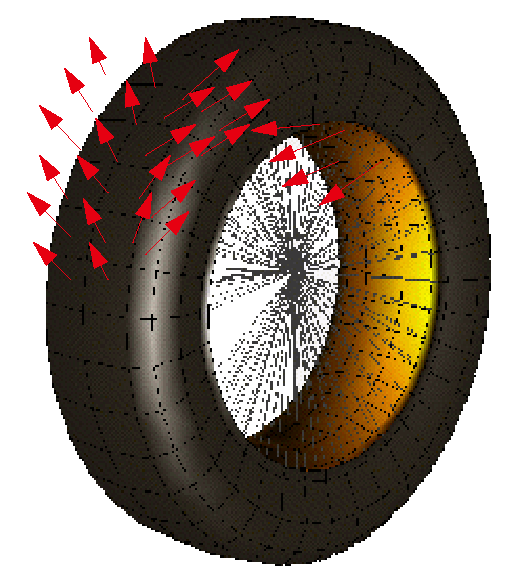Monitored Volume
An airbag is defined as a monitored volume. A monitored volume is defined as having one or more 3 or 4 node shell property sets.

Figure 1. Tire Model: Volume Closed
- AREA Type: volume and surface output (post processing option, no pressure)
- PRES Type: user function defining pressure versus relative volume
- GAS Type: adiabatic pressure volume relation. with
- AIRBAG Type: Single airbag
- COMMU1 Type: Chambered, communicating, folded airbag (airbag with communications)
Same basic equations:
- For tire use PRES or GAS type monitored volume.
- For fuel tank use PRES or GAS type monitored volume.
- For simple unfolded airbag use AIRBAG type monitored volume.
- For chambered airbag use two ore more COMMU1 type monitored volumes.
- For folded airbag use a set of COMMU1 type monitored volumes.